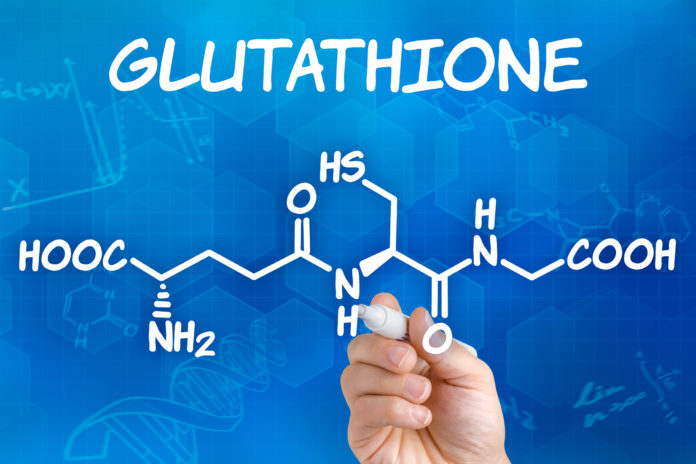By Dr. Mark Stengler, NMD, MS.
Most people are aware that deoxyribonucleic acid (DNA) is your genetic blueprint. It is somewhat analogous to the programs that contain and carry out the information that runs your computer, yet much more sophisticated and complex! I thought many of my readers would find some of the medical information on DNA to be interesting. And of course, I will connect nutritional therapies and their impact on DNA.
Super Computer Inside Your Cells
Interestingly Bill Gates, the co-founder of Microsoft, stated: “Human DNA is like a computer program but far, far more advanced than any software we’ve ever created.” Moreover, Donald Johnson, who holds doctoral degrees in Computer and Information Sciences, as well as Chemistry, notes that DNA “is analogous to a computer’s information as determined from information theory, since both are segregated, linear, and digital.”
Most human DNA is in the cell nucleus, although a small amount is found in the cell’s energy-producing factories (a.k.a. mitochondria). There is no DNA in mature red blood cells, as it is thought this design feature allows the red blood cells to be squeezed and have a compressible shape as pass through blood vessels and capillaries.
Your DNA molecule is like a book. DNA contains four letters, which are known as nucleotide bases. The approximately 6 billion letters (enough to fill 1,000 200-page books) make up the human genome, which contains an estimated 20,000 to 25,000 genes.
Your DNA is the epitome of sophisticated design, complex function, and a highly intelligent language system. Yes, it is a chemical-based language system, even the National Institutes of Health refers to it as such.
The DNA double helix structure is wound up around proteins called histones and compressed into an incredibly tiny space. If you were to stretch out DNA from each cell, it would measure approximately six and a half feet! Also, your DNA can rearrange its genes (protein-coding regions) to adapt to the environment and the needs of your body. Also amazing is it can fold into two and three-dimensional structures for higher functioning.
Now, here is the mind-blowing part. The six feet of coded information is contained in a space smaller than the size of a pinhead. Actually, even smaller, since a cell nucleus is 6000 times smaller than a pinhead!
Keep in mind that DNA must be able to uncoil, replicate (1000 letters per second), protect, and repair itself, and it has to be able to use energy to complete its many processes. When you consider that the human body contains between 50 to 100 trillion cells, that’s enough human DNA to go from here to the sun and back more than 300 times!
Protect Your Genes with Glutathione!
Your body has built-in mechanisms to protect your cell machinery, including DNA. For example, there are sophisticated detoxification pathways that eliminate toxic by-products of metabolism or chemicals we are exposed to from the environment. Also, your body can manufacture antioxidants to protect cell DNA. One example is the super antioxidant known as glutathione. Glutathione has been shown to not only protect DNA from damage but to help DNA repair itself! Our body manufactures glutathione from the amino acids glutamate, cysteine, and glycine. Food sources of these amino acids include chicken, chickpeas, and lentils. Also, our body receives direct glutathione from the foods we consume, such as fruits including apples, avocado, banana, grapefruit, oranges, peaches, strawberries, watermelon; and vegetables including acorn squash, asparagus, broccoli, carrots (raw), spinach, and tomatoes (raw). Additional direct food sources of glutathione include fish, nuts, and poultry.
Most Americans are Glutathione Deficient
It is estimated that humans need a minimum of 300 mg of glutathione daily to protect against environmental toxins, glutathione deficient diet, aging, stress, medications, alcohol, infections, and the aging process. Most Americans consume about 150 mg daily, a level too low for DNA protection.
The best thing to do is to consume more of these foods in your diet. However, if you are exposed to more toxins than usual (say in the workplace), have ongoing levels of high stress, have an imbalanced immune system (weak or overactive such as autoimmune), have a chronic disease, or need to take medications, then you should consider supplementing glutathione. Research has shown that one specific type of oral glutathione is well absorbed and significantly increases red blood cell and saliva levels. The studied version I use with patients is Setria. A typical dose is 200 mg to 400 mg daily.
Nutritioneering
There is another important aspect of DNA that should motivate you to be proactive in supporting your genes with healthy nutrition. This vital aspect is known as epigenetics. What this means is that you can change favorably or unfavorably how your genes express their information. In other words, through the foods you consume and the supplements you use, you can, to some degree, improve the instructions that come from your genes for body function! The more specific term for his is nutrigenomics, which is the study of the effect of nutrients, diet, and gene expression. For example, research has shown that the Mediterranean diet positively affects gene expression in overweight men and women.
Healthy Lifestyle and Attitude Equals Healthier Gene Function
Actually, modern research has also shown that how you handle stress, exercise, and other lifestyle factors, that you can positively influence your genes’ functions. This is important not only for good health and vitality, but to reduce your risk of various diseases such as cancer, heart disease, diabetes, obesity, arthritis, osteoporosis, Alzheimer’s disease, and gut health, as well as virtually every other condition.
The Beginning of our Amazing DNA
Now you may be wondering since all life requires a genetic code, how did it all start in the first place? Scientists have actually taken the time to try and calculate the probabilities of DNA spontaneously forming (of course, one would have to ask where the parts came from and how would it know how to operate assuming the parts spontaneously appeared). For example, Dr. John Barrow, a former Professor of Astronomy at the University of Sussex and recipient of the prestigious 2016 Gold Medal of the Royal Astronomical Society, and Dr. Frank Tipler, a mathematical physicist and cosmologist, who is a professor at Tulane University, have studied this issue. They state in their book, The Anthropic Cosmological Principle, that the odds against assembling the human genome spontaneously are between the fraction of 10 to the trillionth power multiplied by 106 and 10 to the septillion power multiplied by 106. Also, they state the odds of assembling just a single gene by random mutations is between 4.3X10-109 and 1.8X10 -217. In other words, the odds of the spontaneous assembling of DNA are “essentially impossible.”
References:
Alberts, Bruce. Molecular Biology of The Cell (6th edition). 2015: Garland Science. 179 p. 3.
Barrow John, Tipler Frank. The Anthropic Cosmological Principle. Oxford University Press Inc., 565.
Gates B. The Road Ahead. New York: Penguin Group.1995.
Johnson D. Probability’s nature and nature’s probability. 2010. 2nd ed. Lexington: Booksurge Publishing.

Dr. Mark Stengler NMD, MS, is a bestselling author in private practice in Encinitas, California, at the Stengler Center for Integrative Medicine. His newsletter, Dr. Stengler’s Health Breakthroughs, is available at www.americasnaturaldoctor.com His clinic website is www.markstengler.com

